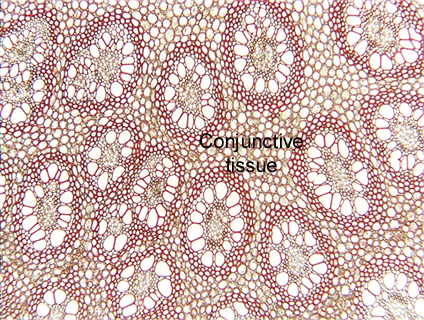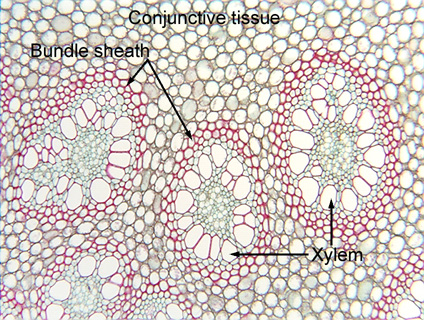 Fig.
11.1-5. Transverse section of rush stem
(Juncus). Rushes live in wet areas and their stems grow to be about two
to four feet tall – about one meter – supporting themselves. They are
monocots, so they do not form wood, and all
their strength comes from three primary tissues:
Fig.
11.1-5. Transverse section of rush stem
(Juncus). Rushes live in wet areas and their stems grow to be about two
to four feet tall – about one meter – supporting themselves. They are
monocots, so they do not form wood, and all
their strength comes from three primary tissues:
1) the fiber sheaths around each vascular bundle,
2) the cells of the conjunctive tissue also have thick walls, and
3) the strength
of the secondary walls of the tracheary elements themselves (the tracheids and
the vessel elements).